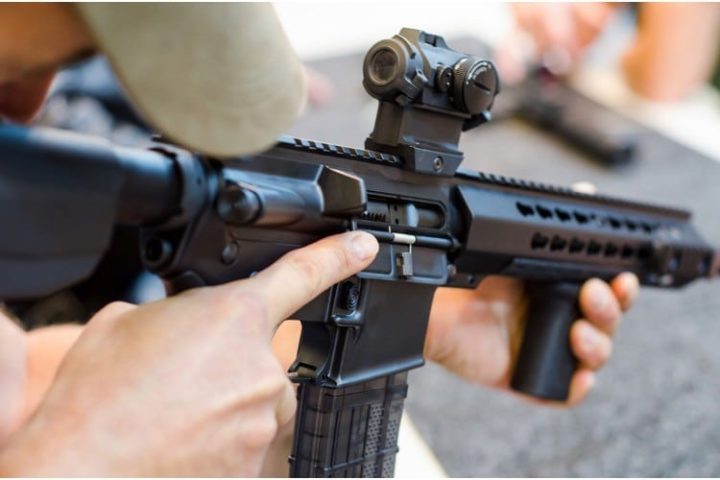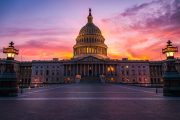
Hoping to ride the momentum from passage of the first major anti-gun legislation in 30 years — the Bipartisan Safer Communities Act — Joe Biden and various anti-gun politicians are pushing the Senate to pass another anti-gun House bill, this one banning all “assault” weapons.
And they’re using the same lies and exaggerations.
Said Biden in July:
Assault weapons need to be banned.
They were banned. I led the fight in 1994.
And then, under pressure from the NRA [National Rifle Association] and the gun manufacturers and others, that ban was lifted in 2004.
We won’t waste readers’ time correcting the errors in this statement, but instead will focus on what he said next:
In the 10 years it was law, mass shootings went down.
But after Republicans let the law expire in 2004 and those weapons were allowed to be sold again, mass shootings tripled.
Those are the facts.
This was echoed by House Speaker Nancy Pelosi: “We know that an assault weapons ban can work because it has worked before.… we witnessed gun crime with assault weapons drop by up to 40 percent.”
Lawrence Keane, senior vice president and general counsel for the National Shooting Sports Federation, told The Epoch Times:
Supporters of the bans are calling their assertions “facts,” in an effort to mislead the public. Many of the Democratic Members of Congress were purposefully misleading in their assertions that the 1994 Assault Weapons Ban reduced crime.
This level of willful ignorance would be comical if … what they are trying to do wasn’t so blatantly unconstitutional.
John Lott, president of the Crime Prevention Research Center, agreed: “The number of murders with rifles actually increased slightly when the ban went into effect.” He pointed out that the percentage of all firearm-related murders with any type of rifle was 4.8 percent prior to the ban, and remained essentially constant during the ban. After the ban expired in 2004, rifle homicides dropped to 3.6 percent of all gun-related homicides.
Reuters reported that Biden, Pelosi, and other opponents of the Second Amendment used a 2021 study from Northwestern University’s Feinberg School of Medicine to promote the bill. When this writer attempted to obtain a copy of that study, however, he found that it was not readily available to the public.
However, in its summary review of the study the university provided this highly revealing disclaimer about the study’s results:
In conclusion, with a few exceptions, there is a surprisingly limited base of rigorous scientific evidence concerning the effects of many commonly discussed gun policies. This does not mean that these policies are ineffective; they might well be quite effective. Instead, it reflects shortcomings in the contributions that scientific study can currently offer to policy debates in these areas….
[N]one of the policies we examined would dramatically increase or decrease the stock of guns or gun ownership rates in ways that would produce more readily detectable effects on public safety, health, and industry outcomes.
The United States has a large stock of privately owned guns in circulation—estimated in 2014 to be somewhere between 200 million and 300 million firearms (Cook and Goss, 2014).
Laws designed to change who may buy new weapons, what weapons they may buy, or how gun sales occur will predictably have only a small effect on … homicides … which are affected much more by the existing stock of firearms.
Let’s recap: this study is one that House Speaker Pelosi and others used to promote the bill that is now headed to the Senate. But other studies are much clearer: The 10-year ban on semi-automatic rifles didn’t reduce gun violence by any scientifically measurable amount.
In fact, in 2013, after reviewing all the available data, FactCheck (funded by the left-wing Annenberg Foundation) noted that it is “premature to make definitive assessments of the ban’s impact on gun crime.”
Research done by Criminology & Public Policy in 2019 found that the ban “didn’t appear to have much of an effect on the number of mass shootings.” The group reported a year later, in January 2020, that such bans “do not seem associated with the incidence of fatal mass shootings.”
The U.S. Centers for Disease Control and Prevention (CDC) said its own studies on the issue were “inconsistent” and concluded that “evidence was insufficient to determine the effectiveness of the 1994 ban.”
The Congressional Research Service concurred: “Public mass shootings account for few of the murders … related to firearms that occur annually in the United States.”
And so, when someone like Biden or Pelosi, or even hard-left Democratic Representative Lloyd Doggett representing Austin, Texas (who sports an “F” rating from the NRA), spouts off with something like this:
[Assault weapons are] easier for a teenager to get than to buy a beer. We’ve turned our churches, our schools, our shopping centers, our entertainment venues, almost any place into a battleground with one massacre after another…
then we know he’s making it up out of whole cloth, and he likely knows it. Such fabrications hide the true intent: these bills have nothing to do with gun control, but everything to do with people control.
Forbes notes that the most recent bill has little chance in the Senate, where Democrats would need 10 Republican defectors to gain the 60 votes needed for passage.



